Allusion is not Illusion
You'll pry my books off my cold, dead body. By the time you shift them all I'll be flat and dessicated.
Currently reading

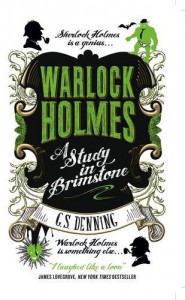
This was such a fun read, smart and hilarious. I was sorry when it was over. I recommend it highly, but primarily for those who've read the original stories, as much of the amusement comes from how closely Denning keeps to the details, while really having something entirely different happen. This is described as mash-up, but it's more like a re-write. The concept is that all the Holmes mysteries are really supernatural in nature, with the famous deductions being made up by Watson to hide the truth. Do persist beyond the first retelling even if you don't love it -- the rest are better. What the heck, with that donut as plot point? I suspect the author started this as a complete joke, then began taking it more seriously but didn't go back and revise that first one. It ends in a cliffhanger, so here's hoping book two comes out soon!
 1
1

This is my third Ruth Chew book. They have all been pretty similar: a couple of pleasant but very forgettable kids have some fantastical but very mild adventures.
I read this book last night and have already forgotten the names of the two kids: something common and Anglophone like Susie and Paul. While engaged in the forbidden naughtiness of roasting hotdogs over a fire, they go to get more wood from the garden of the empty house next door, which turns out not to be empty. They have a new neighbor. No spoiler: she's a witch. The plants have magical properties. Adventures Short mishaps ensue.
It's actually rather impressive how not-scary Chew manages to make scenes like being shrunk and chased by giant insects and animals. The kids seem a lot more worried about the girl's parents getting mad that they accidentally threw out the paper before Father was done with the crossword. Maybe that's realistic.
I recommend this for timid kids who don't like suspense, or for bedtime reading. In addition to not being scary, there isn't much plot (incidents happen, but there's no serious danger or ultimate problem to solve) so it won't keep anyone awake.
 1
1
Or, of course, the other way round.

The first story, "Tasting Gomoa" confused me. A barren women, sexually frustrated and now replaced by a new younger wife, seduces/molests her supplanter. It was not badly written, but there are no supernatural elements and no monster unless you view the protagonist as a rapist. Maybe there is some mythological reference I missed?
After the first story I put the book aside for a couple weeks, interest lost. But I did want to read the next story because I usually like Kaaron Warren. "Dead Sea Fruit" isn't my favorite of hers but it was very original and made me want to continue reading the collection.
Valente's "Bread We Eat in Dreams" was also of a high quality, although missing that elusive something that would make me love it, but at this point I'm feeling like the first story was an oddball and collection overall is above average.
Then came Gemma Files' "The Emperor's Old Bones" which was perfect for this theme: dark, grimy, horrifying, human. The meal being served maybe have been fantasy, but the meat was completely realistic.
Next came Peter Watts' "The Thing," which was a complete change of pace from Files' visceral story, but also excellent. He does a great job creating an alien viewpoint from which to retell the story of "The Thing" (You know, the John Carpenter film? I think it's fair to expect people to be familiar with this movie, but don't worry if you haven't, you'll catch on as the story goes along.)
Next came another well-done alien story, "Muo-Ka's Child", about an alien attempting to care for a human who crashes on her planet.
"Six" was that sort of story that feels more like the first chapter of a longer work -- which it may be. Bobet's Above looks like it may at least be set in the same ruined world. I'll keep an eye on this author, whom I otherwise know only from her contributions to the Shadow Unit series.
"The Nazir" was interesting but not quite to my taste. That's just me, though, I tend to feel that a short story is too little space to do one of those childhood-through-a-lifespan stories. I would have liked this better longer. As far as I know the Nazir is not a real mythical creature. Tell me if I'm mistaken.
Silvia Moreno-Garcia tells what Dracula's wives think of his departure. Liked this one too, although I'm not sure it will stay in my memory.
"In Winter" is a very short retelling -- not even a retelling, a referencing -- of the Snow Queen story with Russian soldiers set in the Winter War. It did little for me.
"Ghostweight" by Yoon Ha Lee was the first story I had read previously. The prose is very poetic but the action a bit hard to follow. Think Patricia McKilip with very alien advanced spacecraft (but actually not like that time McKillip tried to write science fiction).
"How to Talk to Girls at Parties" was Gaiman at his lighter and funnier. I enjoyed this quite a bit, but whatever may have been monstrous was completely off the page so in that sense it missed the mark of the anthology.
Then I hit Lansdale and was so revolted I put the book down and didn't return to it for some days. I never finished this story -- I did take another glance and it was simply too disgusting and nasty for me. Which I guess means that if that's your thing, this is a great story!
"If You Were a Dinosaur, My Love," but sadly you're not, there are no actual dinosaurs in this two-page story, nor is it amusing as one might expect from the title.
As you may be gathering, the book went down hill for me after the halfway point. None of the rest really grabbed me. Probably my favorite it the second half was Polenth Blake's "Never the Same" which was at least different. I'd say I would look for more of Blake's writing, except the author bio mentioned cockroaches.
Summation: although there were more stories here that I didn't like than ones I did, some of the good ones were very good indeed, so I'd still recommend grabbing this, especially if you can get it from a library, and cherry-picking.
 1
1
...and other shadows
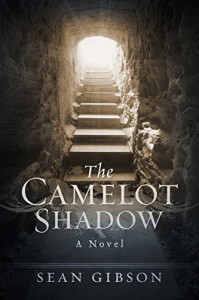
Affluent and elderly Alfred lives a retiring life of study and boozy dinners with old friends, generally happy except for the heavy shadow cast by the incurable illness of his beloved wife. Or is it? One night, a stranger approaches him with a story to far-fetched to be believed; can his fantastical tale possibly be true, or is he lying? In either case, what it his true motivation? To decide, Alfred must learn more -- but a little knowledge is a dangerous thing...
First, the requisite disclaimer: I am a friend of the author. It is a friendship born of goodreading. I do not have to worry that he will disinvite me from his next orgy or throw a Molotov cocktail through my window if I say something mean about his book (which I won't).
I enjoyed this story. I've always had an interest in Arthurian lore, and this was a new approach. I liked the characters, and it was nice to have a group of old friends with their various other entanglements rather than a bunch of kick-ass heroes or anti-heroes. Quieter passages of bibliophile research, train travel, and historical conversation alternate with action: sneaking, stabbing, and skullduggery abound. Some of the murders and fights are pretty violent, although not to such an extent that I'd expect them to bother anyone who wasn't particularly squeamish about such things. I myself am not a fan of physical horror, and none of the violence disturbed me, although a couple of deaths did make me go, "ahhh, boo!"
In terms of language, I would put this somewhere near the middle of the historical fiction spectrum, with one end being authors who attempt (more often than not unsuccessfully) to replicate the formality of historical prose and the other by those who are writing what is essentially a contemporary story and characters in costumes. Gibson avoids anachronistic language but doesn't try to imitate the linguistic formality or convoluted sentences of, say, Dickens or, God forbid, Henry James. I'd compare the prose most closely to that of informal letters exchanged between Victorian friends, if you've ever read any of those. In fact, it reminded me a bit of painter Burne Jones's bantering conversations with his friends, as recorded by his assistant Rooke. Just needs some caricatures in the margins.
I would say that this would make a fun movie, except they would make all the characters 30 years younger, hot, and kick-ass, and then it would be nothing like the original.
In terms of taste, I would recommend this to people who enjoyed, for instance, Barbara Hambly's historical fantasy, such as "Those Who Hunt the Night."
See the River

Either this book is fluffier than it seemed, or I know more about the Amazon than I thought I did -- I wouldn't say I was particularly up on this topic, but I knew practically all these stories except the Isabel Godin one, which was human interest rather than being of political or scientific importance.
I wish there had been more from the point of view of non-European experience of the region: pre-Columbian history, mythology, etc. Aside from a couple brief mentions of the Incas, this is old-school it-doesn't-exist-until-white-men-see-it history.
 4
4

Kind of odd, more like a short story with illustrations than a picture books for kids.
Once upon a time, there was a middle aged guy in a high-necked sweater who met a Renn Faire lady...
Wait, that's just the first illustration, sorry.
Once upon a time there was a beautiful princess. So beautiful than everyone who looked at her directly went blind. Including herself! She was also blinded, but her parents made her keep this a secret and use a seeing-eye dog. No one knew she was blind, so they just thought she was stuck-up and ignoring them. (Great plan, mom and dad!)
Eventually the king discovered that a piece of colored glass prevented princess-looking-blindness. Then all the princes showed up with their colored glasses and fell in love with her. When they plighted their respective troths, the princess asked each one to go blind to prove his love to her, but none of them would. So she decided there was no such thing as love, until one day she happened to be talking to the jester by the cliffs over the ocean and found out he really loved her and he went blind for her and then they both fell off the cliffs and were dead as well as blind. But together! Romance? 
The illustrations are a very 70s take on Pre-Raphaelite.
 6
6

A gentle, prettily-illustrated description of a family's month-long celebration of Ramadan. Most of the description relates to practice -- what is eaten, when various events fall -- rather than the historical or religious meaning, which I would have liked to see a bit more of. I assume the intended audience is non-Muslim children who are having the holiday explained to them. For the purpose of making Islam seem comprehensible and not scary to kids who are probably growing up hearing it demonized I think the book does an excellent job of presenting from a child's perspective, which is similar to the perspective of a kid from any not-super-pious family: the little girl is mostly interested in the gifts, special foods, visiting relatives, parties, etc.

 5
5
Shadows moderately dark

See the cover? OK, it is dark in color, but aside from that the illustration style seems pretty cute and juvenile. This led me to expect a light and fluffier novel than this actually is. That's not a complaint -- I would probably have read it sooner had I not feared it would be too twee for me, as many recent middle grade books have been.
In fact this story is pretty serious and rather dark. Legrand accurately portrays the anger and confusion of people who are facing serious life issues. And the ghosts have some pretty sad backstories, too! I appreciated that this ghost-helping process was difficult for all involved and was an active process rather than just a mediumistic type deal.
Since much is made of Olivia's artistic talent and how dark her sketches are, it would have been nice had the illustrations reflected that. I would have loved to have them be Olivia's drawings, actually. I didn't dislike the ones that were used, please don't be hurt illustrator! I just thought they weren't the best match for the tone of the book.
 2
2
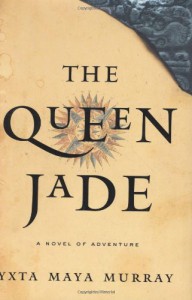
I quit this book at page 60. I tried hanging in there to see if it improved once they actually get out into the jungle/archaeological site/whatever but gave up at "he chucked my chin." The heroine is such a feeb. I struggled get this far. The characters never made sense to me. That's not precisely to say that they're flat; there are real people who don't make sense to me, either. But there are authors who can write characters that don't make sense to me and are still interesting (Eg: Doris Lessing) or even make me more empathetic towards people I don't understand (Eg: Elizabeth Bowen), and this does neither. Maybe it's that Murray just isn't that skilled a writer. I kept hitting lines that made me stop and say "huh?" For instance, when Lola talks about her urge to tell Erik everything about what her mother's doing in Guatemala. Your mother told you to tell NO ONE and you can barely resist telling her rival colleague, who stole her other discovery, who you hardly know, and who is a revolting womanizer? Uh, sure, makes sense. And then when she DOES tell him (idiot) he offers to go with her to Guatemala and is all, "I don't make this offer to everyone" -- yeah, I would assume the opportunities to offer to help people look for missing mothers in Guatemala didn't come along so often. Why is Lola so overwhelmed by Guatemala, anyway? She's been there before, her dad lives there, her mother travels there... her reaction at the airport is akin to some small-town-middle-American who has never encountered anything "foreign" before.
Not buying the made-up historical background with the lady conquistador whose native lover tells her about the secret magic jade, either. Nor that a woman hypothetically in that position of power would write about her sex life in letters that could be potentially intercepted.
The whole thing seemed weirdly fetishizing and othering of the "exotic".
Maybe it gets better later and there are actual adventures or something.
 4
4

I don't remember the appearance of this duo in Sandman so perhaps I'm missing something, but the introductory story was terrible. It was short, minimally plotted, gratuitously violent (I'm not particularly squeamish, but I don't *enjoy* violence, especially not graphic violence perpetrated on children and animals), and neither explained or connected with any larger story. The girls who are introduced are cliched (girls like cleaning, and pink, and hearts and flower) and disappear from the narrative quite soon. The story is resolved by someone else, with no actual mystery or investigation. In fact, if it hadn't been over before I expected it I might not have gotten to the end.
Luckily, it got much better after that. I don't know why that first bit was even there. The rest of the book is two longer stories with a larger plot arc. Crystal Palace is a cool, albeit unfortunately named, kid and her interaction with the two boys really added a dimension. Their relationship was also better developed as it went on. I particularly liked the distinction between their narration. The creepy boarding school was a neat twist on a classic setting: unlike the unrelated book by that name, this school really did have a Demon Headmaster! I wonder if the plot line(s) concerning Crystal's roommate (view spoiler) will get resolved. I'd like to see the adventurous Victorian girls again, too. 
So many cats...
 5
5
Modern @ Moderne

That title's a but redundant, isn't it? "Modern Art at the Modern Art Museum"? There's quite a bit of that in the text as well, such as describing a Cubist portrait as fragmentary and adopting multiple viewpoints. Well, yeah, that would be Cubism for you. 
Braque, woman with mandolin
I didn't get a ton out of this as I know the basics of modern art, but I would recommend this book to someone who is new to the subject. The explanations are easy to understand and there are good quality reproductions. If I assume the intended reader is a tourist who ventured into the museum because it was in a guide, liked what he or she saw, and wanted to learn a bit more or share it with a friend who wasn't there, then this book is excellent. 
Klee, red balloon
When I visited the Pinakothek der Moderne it turned out that the galleries I was most interested in seeing were closed. Therefore I was pleased to at least see some reproductions of the paintings I missed, as well as some works that didn't happen to be on display when I was there.
Kandinsky, rider on the bridge
 4
4
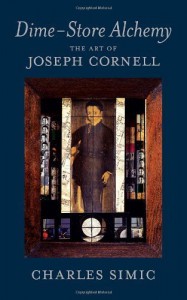
What it doesn't have, unfortunately, is the art itself. There are few poorly-reproduced black-and-white photos of Cornell's works, lumped together in the middle, but that's it. And Simic rarely elucidates which (if any) particular piece he is thinking of. If you, reader, are familiar with Cornell's corpus you may sometimes guess which piece Simic has in mind, but it would be so much lovelier if this were a lavish book with paired color plates and referenced poems (eg Dickinson's "Centuries of June," something by Rimbaud) printed out.
(Soap Bubble Set, Latitude and Longitude)
A soap bubble went to meet infinity.
"Pink Palace"

Another oneiric playhouse. A phantom palace in a forest of bare trees, hoar frost and night.

I pursue an image, no more.
--Gerard de Nerval
 4
4
There is a canker...

THE Heathen hailed us from the beach,
Prayed the new gods to bless and teach.
They worshiped us and gave us food,
Sweet water and maize, nuts from the wood;
Showed us safe harbor. Liquor and beads
Got us broad acres for our needs;
We set shrewd boundaries to the farms.
Too generously we loaned them arms;
Froward they grew and scorned our laws,
They bared white fangs, unsheathed fierce claws.
Haunts in the wilderness they made
To spy upon our barricade,
Our meeting-house and granaries,
Coveting them with cruel eyes.
One stole a heifer from our yard;
We hanged the whelp; they scalped our guard;
We shot their chief and eight tall braves.
The devils swarmed from dens and caves,
And burned the roofs above our heads;
Murdered the children in their beds!
With righteous wrath we armed for war,
Scouring the forest near and far,
River and lake with uncouth name,
All the fair region once their claim,
Killing the Redskin fiends at sight.
At last we rid us of the blight;
We made the savage race to cease,
And earned a Sabbath Day of peace.
We walled the tilth and reared this town.
O great Jehovah looking down,
Reward our pious people still,
Who set Thy temple on the hill.
Wow.
Well, I see why this poet's popularity has not endured.
Second star because my new standard is "Well, it's bad but it's not Lang Leav bad." At least when Brown picks a rhyme scheme she sticks with it. Of course, I don't think they published things that were Lang-Leav-bad a hundred years ago, so maybe I'm being too generous...
A view from Library Windows
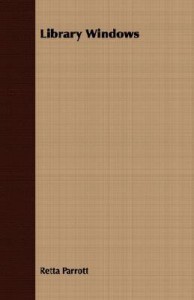
This was not, as I expected, actually about libraries or books. It is instead, Twenty-six sonnets from the civic center of Sacramento... one for each fortnight of the working year which began in the fall of nineteen-nineteen...
The sonnets show the principal changes of the seasons as observed through the windows of the City Library from the viewpoint of the reference librarian...
In other words, they're boring. But it was interesting as an item of local and historical interest. Oh, and there are cute little drawings pasted in, by James A. Holden, an English artist who immigrated to Oakland in 1904 and served for many years as art director of Pacific Railway Advertising Company.
The paper and printing quality are good, with much wasted space. In fact, the last third of so of the pages are blank (add your own poems?). Vanity project? Girlfriend of a publisher? Dunno.
Here's an exemplary poem from a significant date, November the Eleventh.
CLEAR breathing space close to the city's heart
Where children play on ever verdant grass
And old men rest; where hurrying people pass
On the diagonal 'twixt residence and mart
Nor pause to read the weather; where the art
Of music has its hour, the folk en masse
Gathering to sing or listen; where no class
Predominates, but each may have a part:
This is the plaza. Here before the dawn
A year ago, an earnest crowd was drawn
To celebrate the first act of world peace,
In wistful hope that war might henceforth cease.
Long may the plaza be the open space
Where loyal citizens speak face to face!
 7
7

Three Australian children in a borrowed raft are swept out to sea and wind up on an island of tiny people.
 3
3
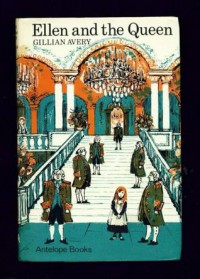
Snippet-like story about a naughty girl who meets a somewhat less naughty richer girl. They misbehave for a day. The end.
The Queen is coming on a visit to the local nobleman. The schoolkids get to see her pass by, but not Ellen because she is being punished for not doing her assignment and being rude. She sneaks off (leaving the four-year-old siblings she is supposed to be watching) and bumps into the nobleman's daughter, who is ditching her nurse. They eat some stolen candy, spy on the prep for the royal visit, see the Queen's ankles by hiding under the bed.
If there was a moral, I missed it. Ellen is genuinely not a likable kid: she brags all the time, is mean to younger kids, disobeys her mother in fairly serious ways (as in, might cause her to lose her position, which was a serious thing in the 19th century), talks back to the teacher, doesn't do her work at school or home. The teacher is kind of mean by today's standards but not too bad, and Ellen's family seems pretty nice. So this isn't a spunky-girl-rebelling-against-oppression story, is my point in brief.
This wasn't bad, but it seemed kind of pointless. It was the kind of day that one might remember from one's own childhood (minus the Victorian aspect) that is interesting from the personal perspective; this kind of story can be made interesting to strangers if one is a good story-teller, but Avery isn't anything special as a writer.This took me under half an hour to read, and I was already bored before I finished it.
 6
6















 2
2
